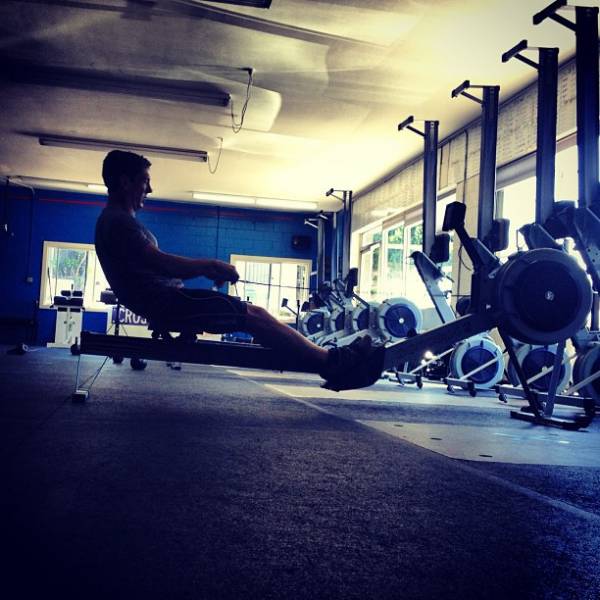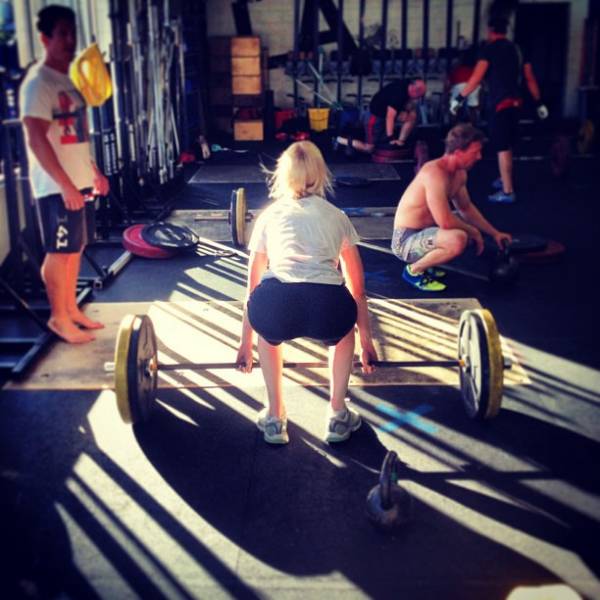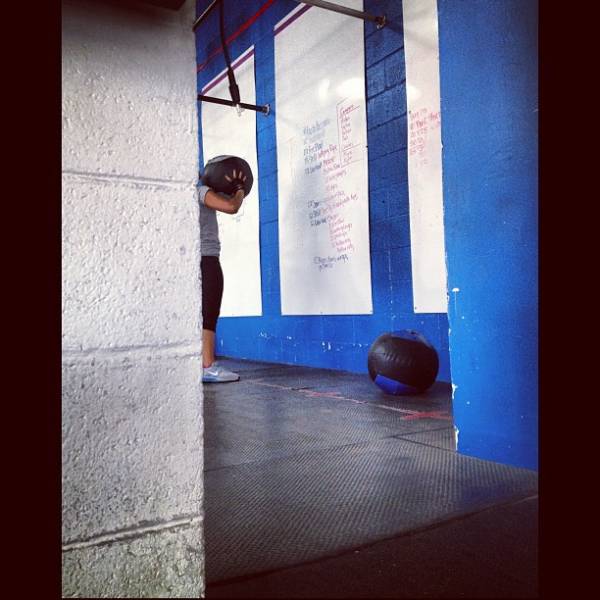I’m guessing there will be plenty of points in the following article that people won’t agree with me on. I want you all to know that I am just fine with that.
The fitness industry has changed dramatically over the last hundred years. From the early Turner Halls with a focus on movement and skill-based training, we’ve gradually dumbed down training to the point where you’re almost guaranteed to become less athletic by joining a gym. Long gone are the days of skill-based training like Indian clubs or tumbling, instead replaced by seated, machine-based exercises. Even early aerobics classes, which were already dumbed down versions of dance classes in many cases, have been replaced by either simpler choreography or classes like Les Mills Pump, which require zero movement. It seems the best solution to people losing the ability to move well is to prevent them from moving at all.
And as gyms have become less and less about actually getting you into shape, and more and more about telling you why you need them to get in shape, we’ve seen a transition. These days, big gym floors are nothing more than showrooms for equipment manufacturers. The idea is to show you that you need all of the available fitness gadgetry to get in shape – preferably you’ll need two of everything.
One of the issues that always comes up when you start balancing the books in any business is minimizing expenses. As a result it seems customer service is a thing of the past in today’s gyms. Essentially clients are paying for access to the equipment, but nothing else. This leads to a paradox – if the client already knew how to get in shape, they already would be. After all, eating well, running outside, and some bodyweight exercise will keep most people in better shape than they could ever hope to be if they just worked hard enough at it. But if you join a gym to get in shape, you clearly don’t know how to get in shape. So you’re going to need some help to decipher all the gadgets and machines – but where is that help in commercial gyms?
In most cases this is in the form of personal training. So now we’ve got a situation where you paid to join a gym and now you need to pay again to be taught how to train. Seems to me you could save yourself some money by just going straight to a personal trainer and avoiding the gym to begin with, but I digress.
Because people are paying to get in shape, and aren’t getting in shape, they’re also leaving in droves. And this creates a terrible loop in gyms. To keep money coming in they need to hire gym sales staff. These staff are usually working flat out to keep new clients coming through the door so the gym can afford it’s menagerie of machines, all lined up like Noah’s Ark, two at a time. Because the gyms are no longer competing on service and quality, but only on size, price, and equipment, the constant change of customers can be massive as they leave to seek newer, bigger, better, and cheaper elsewhere. And this is what gets us to today with 24-hour gyms, PIN entrance, and $10 a month dues.
 But over the last few years there has been a real movement to warehouse-type training locations. These spaces tend to have just bars and maybe some dumbbells and kettlebells. Maybe there are a few rowing machines. But mostly what they had at first was staff on hand helping to teach you how to do things better and creating solid training plans for people.
But over the last few years there has been a real movement to warehouse-type training locations. These spaces tend to have just bars and maybe some dumbbells and kettlebells. Maybe there are a few rowing machines. But mostly what they had at first was staff on hand helping to teach you how to do things better and creating solid training plans for people.
Now, I’m not talking specifically about CrossFit, but I do need to use CrossFit as a demonstration of what I am speaking about. Again, if this offends people I’m more than okay with that.
Back in the early days there was one CrossFit gym. Over the years people started attending the Level I Certification and the number of gyms and affiliates has gone from a handful to a proliferation. In all honesty, there are more CrossFit gyms in my area than regular commercial gyms. So my first question is that given we all know it’s difficult to find good quality trainers at a regular gym, what are the chances of finding a good quality trainer at one of these new CrossFit gyms? Just based on statistics from the rest of the industry, chances are you’ll find trainers, or coaches, or whatever other buzz word they’re calling themselves right now, who have somewhere between two and five years experience. But at least you’ll find some, versus a commercial gym where you’ll likely find none unless you want to pay extra.
But how many coaches do you get in each class? I’ve seen pictures of massive boxes where there are forty or more people training at once, yet only two trainers present. (Because I happen to know all the staff at this particular box I can say this with confidence.) Is that an acceptable amount of supervision? If we go back again to why people have joined in the first place, two of the overriding factors, in my opinion, are the desire to actually get in shape and the desire to have staff contact – two things sorely missing at most commercial gyms. In the scenario I just described, will these people be satisfied with this level of involvement and staff interaction? Just like in big gyms, most of these people are joining because they don’t know how to get in shape on their own and need that direction. Will they get adequate guidance as one of twenty?
 And as boxes get bigger and fancier and more boxes open, competition becomes fiercer and fiercer. At some point owners will start to base their marketing on price, and because of how the fitness industry has taught people to purchase over the last two decades, many clients will simply pick up and go to a cheaper location. And as this war goes back and forth between boxes that could literally be a block away from each other, how long is it until we see a 24/7 box?
And as boxes get bigger and fancier and more boxes open, competition becomes fiercer and fiercer. At some point owners will start to base their marketing on price, and because of how the fitness industry has taught people to purchase over the last two decades, many clients will simply pick up and go to a cheaper location. And as this war goes back and forth between boxes that could literally be a block away from each other, how long is it until we see a 24/7 box?
And if the future is that affiliates are going to seek to build bigger and fancier boxes, that many are starting to see filled with various types of machines, aren’t they just the same thing as before, just with slightly different exercises? At least in a regular gym you can go in and do your own session. In a box you’re tied into a cookie-cutter plan written for the average person training at that box. So even the degree of customer service that was previously better, will actually be taking a step back again towards our old traditional gym model. Group exercise, particularly large group exercise, is always a compromise. Given what most CrossFit boxes charge, is that a reasonable price to be paying for a compromised plan? Does the level of service and attainment equal the fee being asked for?
Is it just a normal cycle that our modern lifestyle causes something good and small to ultimately be pushed to become bigger and bigger until it can’t sustain itself? My belief is that the only thing that truly separates any business in today’s world is level of service. I’ve watched many different types of business fall into the trap of competing on price alone. My father, a former CEO of a major international company, calls this a race to the bottom. Meanwhile, top tier companies like Rolls Royce seem to last by being built on extremely high quality and value, rather than on comparison to others.
Like many on Pulse Beat Fit, I don’t believe you need fancy equipment or expensive anything to get in shape. Meanwhile, the fitness industry has been telling us for years we need $10,000 treadmills and a gym with every piece of equipment ever imagined. And then CrossFit sprang up and became wildly popular while showing how little equipment you really need. Until recently that is.
 I still believe that the ultimate reason why people pay for training is to actually get in shape. There are many other reasons, but the bottom line is that people want to look and feel better. How efficiently a business helps them do that will ultimately determine it’s success, and, in my experience at least, that has always been determined by exactly how much time I can spend with people individually, even in group settings. I know that if we write a plan for a group that we refuse to deviate from that people are going to get hurt, and ultimately that means they won’t get the result they’re after and they’ll leave the business.
I still believe that the ultimate reason why people pay for training is to actually get in shape. There are many other reasons, but the bottom line is that people want to look and feel better. How efficiently a business helps them do that will ultimately determine it’s success, and, in my experience at least, that has always been determined by exactly how much time I can spend with people individually, even in group settings. I know that if we write a plan for a group that we refuse to deviate from that people are going to get hurt, and ultimately that means they won’t get the result they’re after and they’ll leave the business.
As always, the future of the fitness industry looks very interesting to me.
Photo 1 by www.localfitness.com.au [Attribution, CC-BY-SA-3.0 or GFDL], via Wikimedia Commons.
All other photos provided by CrossFit LA.






